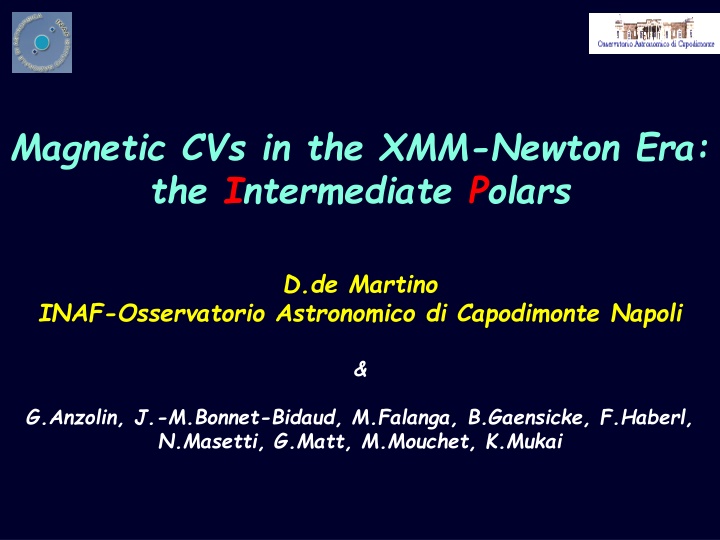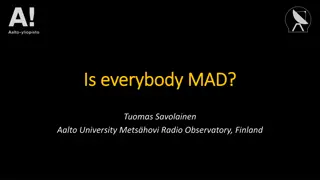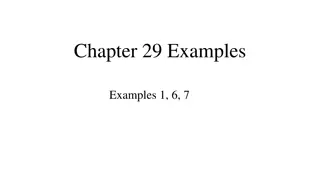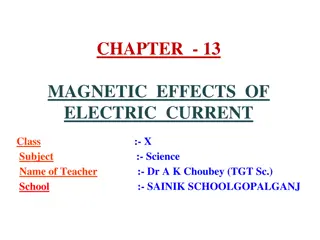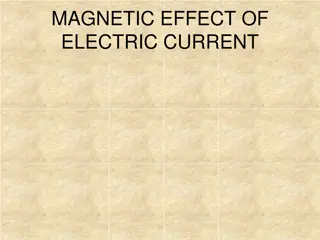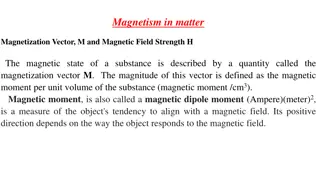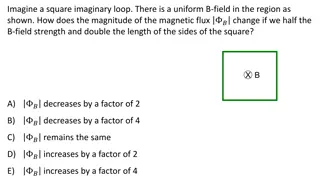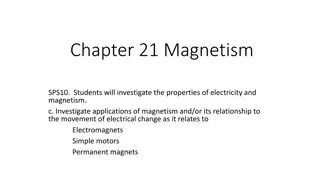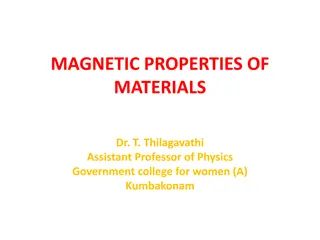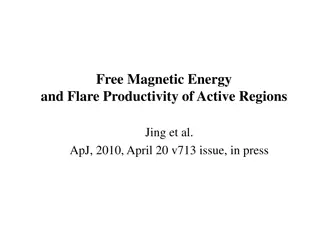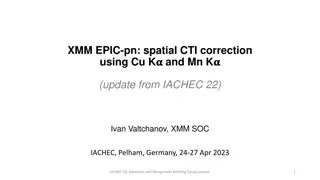Magnetic CVs in the XMM-Newton Era: Intermediate Polars Evolution
Delve into the intriguing realm of Magnetic Cataclysmic Variables (CVs) in the XMM-Newton era through the study of Intermediate Polars (IPs). Explore questions surrounding the evolutionary link between Polars and IPs, the role of MCVs in the Galactic X-ray source population, and the impact of fundamental parameters on accretion and emission properties. Uncover key findings from the XMM-Newton observations, shedding light on the increased IP membership and revealing new X-ray properties shared with Polars. Dive deep into the evolution of MCVs, the classification of MCV candidates, and the mysteries surrounding B-field strengths in IPs, offering insights into their potential synchronization and the emergence of low-field Polars. Discover the changing landscape of Hard X-ray MCVs through transformative surveys like INTEGRAL ISGRI and SWIFT/BAT, providing a fresh perspective on the cosmic sources revealed in this high-energy domain.
Download Presentation

Please find below an Image/Link to download the presentation.
The content on the website is provided AS IS for your information and personal use only. It may not be sold, licensed, or shared on other websites without obtaining consent from the author.If you encounter any issues during the download, it is possible that the publisher has removed the file from their server.
You are allowed to download the files provided on this website for personal or commercial use, subject to the condition that they are used lawfully. All files are the property of their respective owners.
The content on the website is provided AS IS for your information and personal use only. It may not be sold, licensed, or shared on other websites without obtaining consent from the author.
E N D
Presentation Transcript
Magnetic CVs in the XMM-Newton Era: the Intermediate Polars D.de Martino INAF-Osservatorio Astronomico di Capodimonte Napoli & G.Anzolin, J.-M.Bonnet-Bidaud, M.Falanga, B.Gaensicke, F.Haberl, N.Masetti, G.Matt, M.Mouchet, K.Mukai
Outline Open questions: Evolutionary link between Polars and IPs Role of MCVs in Population of Galactic X-ray Sources Role of fundamental parameters in accretion and emission properties Results from XMM-Newton: Increased IP membership New X-ray properties: commonalities with Polars
Questions on MCV Evolution MCVs ~20-25% of all CVs vs MWDs~10% of all WDs RK v.7.10 (2008) ~50% ~40%
MCV Class Candidates increased by 50% in last 4yrs (see Koji Mukai s IP Web Site) Census: Polars Pre-Rosat 18 (60%) 12 (40%) Post-Rosat 55 (70%) 25 (30%) Today 94 (54%) 78 (46%) ~70% Do IPs evolve towards synchronism? Do IPs harbour lower B field WDs? IPs QUESTION ~80%
What about B field strengths in IPs? Most IPs lie below synchronization line Systematic Survey in Polarized light still missing! On average lower B field systems that may evolve Polars: Beuermann (2000) IPS: Butters et al. 2009 towards synchronism Polarimetric UBVRI survey recently started @ NOT (Katajainen et al. 2007; Butters et al. 2009) V405 Aur Spectropolarimetriy @ ESO/VLT attempted but large oversubscription! Polars PQ Gem V2400 Oph RXJ2133 BG CMi ROLE OF SALT TELESCOPE ! WGA1958 RXJ1730 V1223 Sgr
Do IPs evolve towards synchronism? Wide range of asynchronisms: - Clustering close to Pspin/Porb=0.1 but new optical candidates at high & low degree of asynchronism - 50% of the class still to be confirmed in the X-rays! B 10 MG will evolve into Polars B 10MG evolve into unobservable low-field Polars or B field re-emerges when Mdot decreases. To keep spin-equilibrium Pspin increases while Porb decreases -> short Porb IPs should be weakly desynchronized Norton et al. (2004,2008) propose IPs at Porb>3hrs with: Confirmed O Candidates X This work XMM-Newton
HARD X-RAY MCVs HARD X-RAY SURVEYS ARE CHANGING THE VIEW! INTEGRAL ISGRI: 421 sources (~5% are CVs) SWIFT/BAT: 450 sources (~6% are CVs) INTEGRALl 3 catalogue (Bird et al. 2007) SNR 2% Unknown 19% Pulsars 3% AGN 32% LMXB 21% HMXB 18% CV 5%
Common characteristics of hard X-ray CVs? Most RXTE ,INTEGRAL & SWIFT detected CVs are MCVs (Revnistev et al. 2004; Barlow et al. 2006; Bonnet-Bidaud et al.2007; Mukai et al.2007; Bodaghee et al. 2007; Shafter et al. 2008, see also Potter et al. Poster yesterday .) INTEGRAL-ROSAT COLOR DIAGRAM: 25 INTEGRAL CVs with ROSAT counterpart Hard spectra with wide range of absorption INTEGRAL CVs MAGNETISM & ASYNCHRONISM SEEM TO BE COMMON CHARACTERISTCS OF HARD X-RAY CVs ! Dwarf Nova IP Candidates Confirmed IPs Confirmed Polars Asynchr. Polars Candidate Polar (Haberl et al. 2002; Staude et al. 2006; de Martino et al. 2006,2008; Anzolin et al. 2009) 1 n MCV 4 POLARS IPs 20 Confirmed IPs with XMM-Newton
Role of MCVs in Galactic Populations? CHANDRA Survey of Galactic Center (Muno et al. 2003;2004; Ruiter et al 2005): - 1500 over 2000 Faint Sources: Lx < 1031 1033 erg/s - Hard spectra: kT > 8keV & Fe H-like and He-like emissions - Affected by local absorption - Variable: Periods 300sec 4.5hrs IPs proposed to be dominant population IPs a still hidden population of XRBs? RXTE & INTEGRAL surveys of Milky Way (Sazonov et al. 2006; Revnivtsev et al. 2006, 2008): -XLF [2-10keV] at L<1034erg/s from Coronal (65%) and CVs (35%) -XLF of CVs [2-12keV] similar to XLF[16-60keV] Galactic Ridge emission at E>20keV dominated by MCVs See also poster on Chandra Survey of Galactic Bulge by Torres et al. (Tuesday)
Role of XMM-Newton Uninterrupted observations of faint sources : - Secure membership identification - Accretion mode diagnostic : - , - , Energy dependent X-Ray/UV/Optical pulses: - Geometry and magnetic field complexity - Sites of Primary & Reprocessed radiation - Absorption effects X-Ray spectra: - Accretion region diagnostic: Pre-Shock, Post-Shock, WD irradiation XMM-Newton observed 20 IPs : Disc Direct (no disc) accretion Disc overflow (Hybrid) Confirmed IP status for 11 candidates! Provided new hints in emission properties
X-ray Periodicities Complexities in Energy dependent X-Ray Power Spectra - One Pole Hybrid (Anzolin et al. 2008) One Pole disc-fed (de Martino et al. 2005)
X-ray Periodicities Complexities in Energy dependent X-Ray Power Spectra - 2 3 Two Poles disc-fed (de Martino et al. 2008) Two Pole Hybrid (de Martino et al. 2006)
X-ray Pulses Energy dependent structured pulsations See also Koji Mukai s Poster #87 Two hard & Soft Poles Stronger Soft Pole Primary hard & soft Pole + Secondary soft Pole One hard Pole
X-ray Spectral Properties Starting from the simplest case of HT Cam (de Martino et al. 2005) Multi-temperature post-shock flow :EM(T) (T/Tmax) -He-like OVII triplet: no forbidden line -> high density limit ne> 5x1012cm-3 - kTmax=20keV; =0.7 Az=0.6 - Absorption negligible (de Martino et al. 2005,A&A) - OVII/OVIII ratio -> kTmin=0.3keV - V(OVIII) 1000km/s-> Vshock Vff/4
X-ray Spectral Properties Complexities at soft energies UU Col a Soft ROSAT IP Two temperatures: kT hot=11 keV kT cool=0.18 keV Az=0.4 Black-Body: kTbb=50eV Strong lines OVIII, OVII OVII/OVIII ratio -> kT=0.2 keV (de Martino et al. 2006, A&A) Partial(51%) Dense Absorber: 1.0x1023cm-2 Multi-temperature plasma often unable to represent spectra
X-ray Spectral Properties XMM-Newton finds new SOFT X-RAY IPs RXJ0704+2625 & RXJ1803+4012 Multi-temperatures: kT max ~30 keV One temperature: kT hot > 40 keV Black-Body: kTbb=95eV Black-Body: kTbb=84eV Partial(40%) Dense Absorber: 3x1023cm-2 EW (6.4keV) = 140 ev Total Absorber: 1x1020cm-2 Partial(35%) Dense Absorber: 2.0x1023cm-2 (Anzolin et al. 2008)
Hard X-ray IPs: a growing family & further complexities at soft energies RXJ1730-0559 a hard IP with a complex Soft spectrum XMM-NEWTON EPIC-pn & MOS INTEGRAL IBIS ISGRI Two temperatures: kT hot = 55keV kT cool=0.17 keV Az=0.4 Black-Body: kTbb=90eV Total Absorber: 3.6x1021cm-2 Partial(56%) Dense Absorber: 1.4x1023cm-2 OVII Absorption edge@ 0.74keV ~1.8 Reflection: 6.4keV Fe line: EW=110eV (de Martino et al. 2008,A&A) 3rd IP with absorption edge! (V709 Cas - de Martino et al. 2001; V1223 Sgr Mukai et al. 2001) Warm absorber in IPs
Hard IPs..a growing family but NOT all of them have a SOFT BB component IGRJ0023+6141 & RXJ2133+5107 Two temperatures: kT hot >14 keV kT cool=0.17keV Three temperatures: kT max = 40 keV kTmed =5 keV kT low = 1keV EW (6.4keV) = 140 ev Black-Body: kTbb=99eV Partial(45%) Dense Absorber: 1x1023cm-2 EW (6.4keV) = 100 ev Total Absorber: 2x1021cm-2 Partial(36%) Dense Absorber: 1x1023cm-2 (Anzolin et al. 2009, sub)
SOFT IPs: An emerging class QUESTIONS: Characteristics: Heavily absorbed Nh ~ 1023cm-2 BBs - Do all IPs possess soft BB component? Geometric factors may play a role (Evans & Hellier 2007) Absorption dips and BB ROSAT: 4 IPs with soft BB similar to Polars (30-60eV) XMM-Newton: Current roster of 13 IPs (42% of class) BB temperatures over a wider range (30-100eV) Soft-to-Hard Luminosity ratio lower than Polars WD spots smaller for hotter BBs (f ~10-5-10-6) but not always (Anzolin et al. 2008) - High kTBB -> Lx locally exceeding Eddington What happens at footprints? - Is kTBB linked to Magnetic Field Strength? Irradiation by Cyclotron & Bremsstrahlung ? Polars: Ramsay et al. 04 IPs: Haberl et al. 02, de Martino et al. 06,08 Evans & Hellier 07 Staude et al. 08 Anzolin et al. 08, 09
SOFT IPs: An emerging class Reprocessing at WD poles Bremsstrahlung irradiates small WD spot areas Cyclotron radiation beaming on wide areas BB Temperature is average over spot area (Konig et al. 2006) RXJ2133+51 94-102 Name kTBB(eV) Anzolin et al. 2008,09 48-66 Mag.Field (MG) Butters et al.2009 8-21 PQ Gem V405 Aur 65-73 ~30 RXJ1730-0559 90-93 >5MG >5MG V2400 Oph 103-107 8-27 Hotter BBs for lowest field IPs Cooler BBs in higher field IPs (Anzolin et al. 2008) Polarization searches to confirm the hypothesis A complete census needed to draw conclusions!
XMM-Newton Changing our view of MCVs Increasing number of IPs with Soft X-ray BB but with wider Temperature range than Polars Increasing number (~33%) of Polars with no Soft X-ray BB (Homer et al. 05; Schmidt et al. 05; Ramsay et al.09; Vogel & Schwope poster yesterday) kTbb Mdot/f1/4 Shifted to the EUV range This is what believed to occur in most IPs Reprocessing in MCVs occurs over large range of spot areas Tracing different B,mdot parameter space values?
Conclusions Identification of new MCVs essential to understand : Evolution of MCVs Potential role in Galactic Populations of X-ray sources Role of XMM-Newton in: Identification of new faint candidates Study of temporal and spectral properties Increasing similarities of IPs with Polars: One or Two-poles active & secondary pole is soft Increasing number of IPs with soft BB but with differences Increasing Polars with no soft BB We still need a complete understanding of MCVs Role of fundamental parameters (Bwd,Mwd,Mdot) in emission properties
